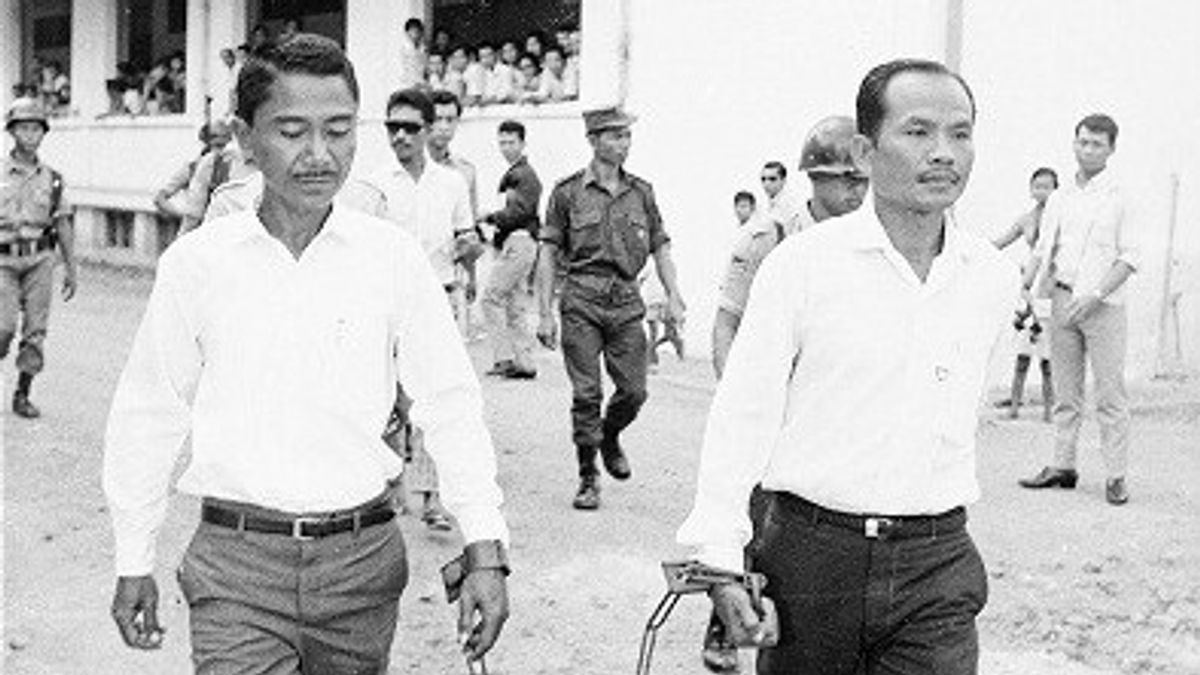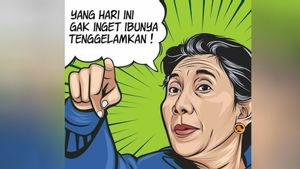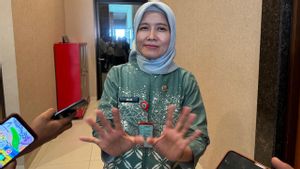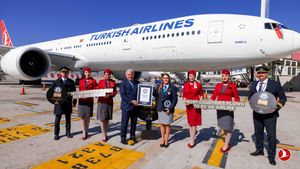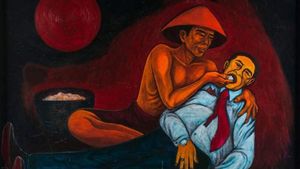JAKARTA - Kusni Kasdut was once listed as a freedom fighter. He played an active role against the Dutch. His guts are high. Prisons and bullets did not make him afraid. Unfortunately, the revolution does not promise prosperity. His services have not been used since Indonesia's independence. The injustice was strengthened until poverty hit him. Shortcuts were taken. Kusni began to try the world of shadow. His criminal career was stellar. Especially when Kusni led a phenomenal robbery to the Elephant Museum.
The proclamation of independence means so much to all Indonesian people. This momentum is seen as a sign that Indonesia is free from the shackles of colonialism. In fact, the facts on the ground are different. The proclamation of independence is just the beginning of the story.
The insistence of the Dutch in reclaiming Indonesia made the Indonesian people again forced to take up arms. Maintaining independence is his teaching. This struggle is known as the period of revolution. There is no youth who does not burn his enthusiasm for defending the Red and White banner. Including Kusni Kasdut.
Kusni then gave his whole life to the war of independence (1945-1949). He joined the guerrilla against the Dutch. Kusni joined the people's movement from the East Java Front. Kusni Kasdut's job is not only to carry weapons. He is also required to use his brain to find funds for the revolution. Either way, including robbing the landlord's property.
His persistence in seeking funds for the revolution earned him the nickname Si Kancil. It is said that in his act of seeking funds, Kusni is like "Robin Hood." The wealth obtained was not entirely given to the revolution, but also to help the poor.
"This is the story. During the war for independence, this man from Blitar was guerrilla with the people's movement in his own area. Some time later he, who during the Japanese era had studied until the second grade of the Technical School, joined the Student Army led by Mas Isman (now Major General) the figure of the Multipurpose Gotong Royong Organization (Kosgoro). At one time the government rationalized the armed forces. Bad luck confronts Kusni. He was one of 500 ex-TPs who had to stop,” wrote a Tempo Magazine report entitled For Sale: Furniture Made by Kusni Kasdut (1977).
"The reason is not being told, the main thing is that it makes me difficult," he explained. Several times Kusni went back and forth to Jakarta to contact the agency whose job it was to channel ex-combatants. But the result is empty. There were only promises, even though at that time I was already married. have one child. Out of his mind, together with some of his friends to extort in Surabaya. A few times it was lucky."
Unfortunately, it must be accepted. He was refused entry into the Indonesian National Army (TNI). The reason is because Kusni is not officially registered in a unit. What's more, the Dutch soldier's shot in his leg was another reason for refusal. Therefore, in the case of Kusni Kasdut, the national revolution could not guarantee the welfare of many parties.
There is no decent job that he can afford. Kusni Kasdut also fell into poverty. The black world then went through. From stealing to kidnapping. In order to save his dignity as the head of the family. Even that was perpetuated when he tried the fate of Jakarta.
In Jakarta, he intends to rob and kidnap a wealthy Arab descendant, Ali Badjened to get money. But the plan didn't go smoothly. Ali Badjened fought back until he was hit by a Kusni Kasdut bullet. Such a murder crime immediately shocked the entire capital. Kusni Kasdut's name suddenly became famous for the second time. Not as a freedom fighter, but as a big-time criminal.

“It was in Kebon Sirih that Kusni Kasdut, before committing the gold robbery at the National Museum, killed a wealthy Arab named Ali Badjened in the 1960s. Kusni Kasdut in the action was accompanied by Bir Ali, son of Cikini," wrote Alwi Shahab in his book Batavia City of Flood (2009).
“Ali Badjened was robbed in the afternoon when he just came out of his residence in the Awab Alhajiri area. He died right then and there as a result of a bullet fired from a jeep by this criminal. The incident was very shocking at that time because the problem of robbery by killing victims has not happened as much as it is now.”
Robbing the Elephant MuseumThe failure of Kusni Kasdut's plan to rob Ali Badjened made him think of another big and phenomenal robbery plan. The National Museum is the next target. For Kusni Museum, which is better known as the Elephant Museum, has a lot of wealth. In fact, it's priceless.
Kusni Kasdut knows this because he has been doing research on the contents of the museum for a long time. All heirlooms made of gold, diamonds, to gems tantalize him. The robbery plan was finalized by him. The goal is none other than to learn from past mistakes.
“Under the hot sun of Jakarta, which is being intoxicated by revolution, Kusni shuffled from Harmoni to Merdeka Barat, and saw the crowds in front of the building with the elephant statue on it. He reads: a museum, and idly comes in just to unwind, he thought.”
“He looked at the statues without the slightest interest. But when he reached the Heirloom Room, his blood stirred and excitement filled him. Around the walls, on display lie priceless treasures; swords, kris, rings, brooches, bracelets, necklaces, all made of gold, diamonds, or gems,” said Parakitri T. Simbolon in the book Kusni Kasdut (1979).

The robbery took place on May 31, 1961. Kusni Kasdut and his colleagues – Herman, Budi, Sumali – carried out the action from a house in the Slipi area, West Jakarta. Their strategy is to try to disguise themselves as police.
To support the action, they prepared a stolen jeep with a forged number plate. Do not forget, each of them equip themselves with weapons of fire and daggers.
Kasdut and his friends then visited the Elephant Museum in the morning. The museum officer gave way to the police officer, although surprised by the police arrival to the museum. They also tried to act like ordinary visitors. He observed all kinds of historical objects carefully. Finally arrived. The careless guard by the museum staff became an opportunity for the Kusni Kasdut group to act and take various collections from the Library Room.
The plan almost fell apart because in the Library Room there were two officers who were suspicious of their activities. Weapons were pointed. After that, Kusni Kasdut swiftly broke into the gold and diamond display cabinet. That said, historical items from rings, diamonds, and earring reached IDR 2.5 billion.
The two guards did not remain silent. They scream when the opportunity arises. As a result, an officer was shot by Kusni Kasdut's gang. After that, they managed to escape before the police arrived at the Elephant Museum. The news of the robbery at the Elephant Museum became a hot topic in various media. As well as being the most phenomenal robbery of its time.
“Kusni Kasdut's name is getting more and more popular and is known to steal art objects. On May 31, 1961 Kusni Kasdut robbed the National Museum which is familiarly called the Elephant Museum. In carrying out his actions, Kusni Kasdut disguised himself by wearing a police uniform and then entered the museum.”
“Then they took visitors hostage and shot and killed a museum officer. He then took away the 11 Gems of the museum collection. Kusni was later arrested while selling the loot in Semarang,” concluded Hukman Reni in the book Heboh Bali Nine: Execution of the Australian Drug Syndicate (2015).
*Read other information about HISTORY or read other interesting articles from Detha Arya Tifada.
Other MEMORIESThe English, Chinese, Japanese, Arabic, and French versions are automatically generated by the AI. So there may still be inaccuracies in translating, please always see Indonesian as our main language. (system supported by DigitalSiber.id)
